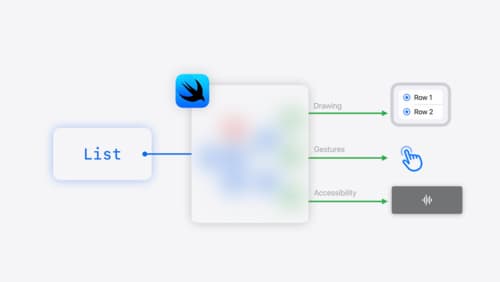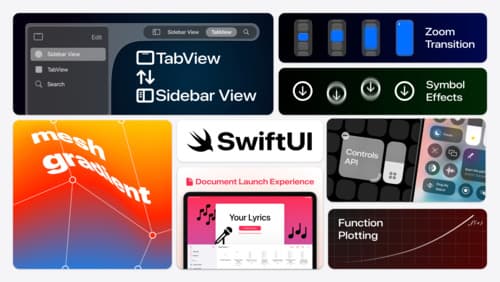how do I optimise SwiftUI
Asked on 2024-07-30
1 search
To optimize SwiftUI, you can leverage several techniques and features discussed in various WWDC sessions. Here are some key points:
-
Adaptivity and Previews:
- SwiftUI automatically provides adaptivity along several dimensions, such as dark mode, dynamic type, and localization. Using Xcode previews can help you quickly see how your views look in different contexts without needing to run the app repeatedly. This can be particularly useful for ensuring your app looks good in various environments and configurations (SwiftUI essentials).
-
Dynamic Layouts:
- Use the dynamic type size environment keypath to create layouts that adapt to different text sizes. For example, you can switch between
HStackandVStacklayouts based on the selected text size to ensure readability and proper use of space (Get started with Dynamic Type).
- Use the dynamic type size environment keypath to create layouts that adapt to different text sizes. For example, you can switch between
-
State-Driven Views:
- SwiftUI views are state-driven, meaning they automatically update the UI when the view state changes. This helps eliminate boilerplate code and update bugs, ensuring your UI stays in sync with your data (SwiftUI essentials).
-
Custom Controls and Graphics:
- SwiftUI allows for the creation of unique custom experiences using low-level APIs. You can build custom control styles, use canvas for high-performance imperative drawing, and even apply custom Metal shaders directly to SwiftUI views. This can help you create visually appealing and performant custom components (SwiftUI essentials).
-
Platform-Specific Optimizations:
- SwiftUI has specialized APIs for each platform, allowing you to tailor your app's experience to the unique characteristics of each device. For example, you can use the digital crown on watchOS or take advantage of macOS's flexible windowing model (SwiftUI essentials).
-
New Graphics Capabilities:
- SwiftUI introduces new graphics capabilities, such as the
mixmodifier on colors and precompiled shaders to avoid frame drops. Additionally, new APIs provide fine-grained control over scroll views, allowing you to react to changes in content offsets and sizes (What’s new in SwiftUI).
- SwiftUI introduces new graphics capabilities, such as the
By utilizing these techniques and features, you can optimize your SwiftUI app to be more adaptive, performant, and visually appealing across different Apple platforms.

SwiftUI essentials
Join us on a tour of SwiftUI, Apple’s declarative user interface framework. Learn essential concepts for building apps in SwiftUI, like views, state variables, and layout. Discover the breadth of APIs for building fully featured experiences and crafting unique custom components. Whether you’re brand new to SwiftUI or an experienced developer, you’ll learn how to take advantage of what SwiftUI has to offer when building great apps.

Platforms State of the Union
Discover the newest advancements on Apple platforms.

What’s new in SwiftUI
Learn how you can use SwiftUI to build great apps for any Apple platform. Explore a fresh new look and feel for tabs and documents on iPadOS. Improve your window management with new windowing APIs, and gain more control over immersive spaces and volumes in your visionOS apps. We’ll also take you through other exciting refinements that help you make expressive charts, customize and layout text, and so much more.
